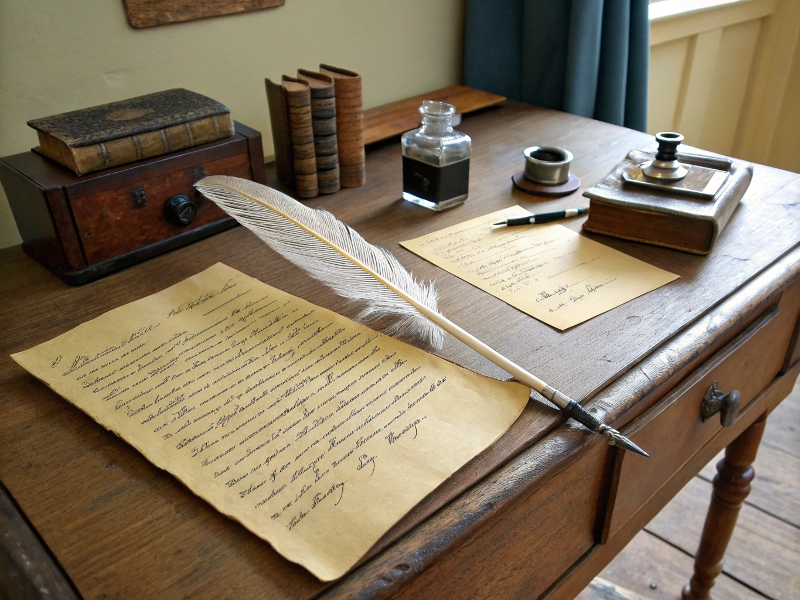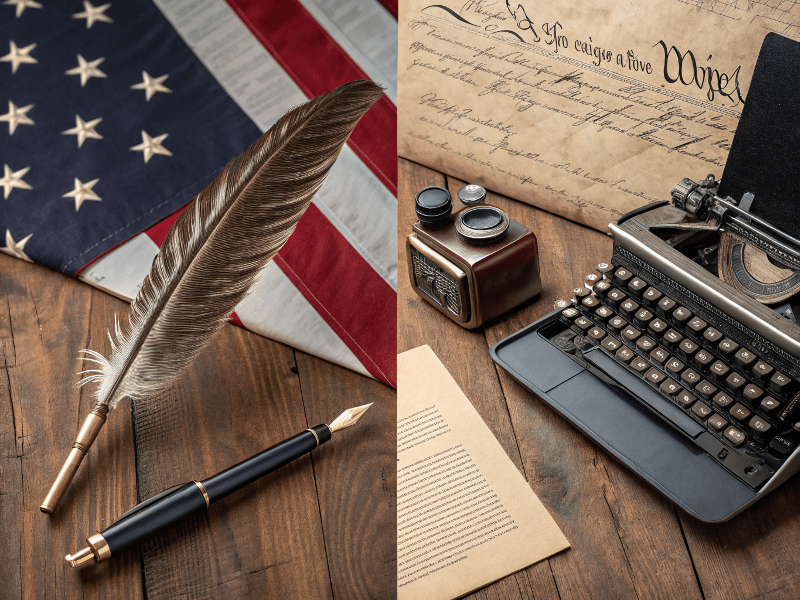The History of Stationery in America
The Development of Writing Instruments and Their Influence on Culture
When we think of stationery in America, we often think of innovations and technological advancements, but few consider the important role that writing instruments have played in the country’s history. The development of stationery in America, from simple quills to modern gel pens and laptops, has had a significant impact on education, business, and culture. In this text, we will explore the history of stationery in America and how writing instruments have changed society.
The First Writing Instruments in America
The history of stationery in America begins in colonial times when the first writing instruments were quite primitive. At that time, Americans used quills, hand-made ink, and parchment. Writing was considered an important skill, especially for creating official documents such as contracts, letters, and legal papers. Stationery in early America was a symbol of status and order.
Over time, metal nibs emerged, followed by the first mass-produced fountain pens. This greatly simplified the writing process and made it more accessible to a wider population. In the 19th century, a true breakthrough occurred in writing instruments. With the advent of factory-made writing tools such as mechanical pencils and steel nibs, the writing process became much faster and more convenient. These changes positively impacted the development of business, education, and personal correspondence.

The Development of the Paper Industry
An essential part of stationery is paper, and the development of the paper industry played a significant role in American history. The first paper mills began to appear in the late 18th century along the East Coast, where there were sufficient resources for production. Initially, cotton waste was used to make paper, but later, cheaper wood pulp took its place, making paper more affordable and allowing for its expanded use.
By the end of the 19th century, paper became indispensable in the fields of record-keeping, education, and printing. During this period, newspaper publishing began to thrive, and stationery became more mass-produced and accessible. In the 20th century, the paper industry in America continued to improve, with new types of paper emerging, including colored and decorative materials, as well as recyclable options. With the development of printing technologies, the production of stationery items became faster and cheaper.
Today, the paper industry in America emphasizes environmental sustainability and innovation. Each year, the use of recycled materials increases, helping to reduce the environmental impact and make stationery products more accessible.
The Influence of Stationery on Education
Stationery has also played an important role in education. The development of writing instruments in America played a key role in expanding the educational system. In the early 20th century, the mass production of notebooks, pencils, and pens became widely available to all schoolchildren. This greatly improved the learning process and made education more accessible to children from all social backgrounds. With the advent of ballpoint pens in the mid-20th century, the learning process became even more convenient and faster.
Today, both traditional writing instruments and new digital technologies are actively used in education. However, stationery items such as paper notebooks, textbooks, and notes remain an important part of the learning process. Students continue to use pens and pencils alongside modern electronic devices, underscoring the importance of stationery in education.

Stationery in Business and Culture
The influence of stationery on business and culture in America cannot be overstated. Writing instruments have become an integral part of business correspondence, contracts, records, and other documents. The development of stationery products has contributed to the growth of literacy and expanded opportunities for conducting business, making America a powerful economic hub.
Today, despite the prevalence of digital technologies, stationery continues to play an important role in the business world. Offices, law firms, banks, and other companies cannot function effectively without writing instruments. Even in the digital age, paper documents, business cards, and notebooks remain key elements of business culture.
Stationery as Art and a Collectible Object
Interestingly, writing instruments in America have become not only utilitarian objects but also items for collecting. In the U.S., there is a whole community of people who collect vintage writing tools such as antique fountain pens, ink wells, and mechanical pencils. Rare models from brands like Parker, Waterman, and Montblanc can sell for thousands of dollars at auctions, underscoring their value to collectors..
Moreover, stationery has inspired artists and designers. Despite the widespread use of digital technologies, many artists and writers continue to prefer traditional writing instruments. Pens, pencils, and paper have become not just tools for writing, but symbols of creativity and self-expression.
Conclusion
The history of stationery in America is a fascinating journey from simple writing tools to modern innovative stationery products. Writing instruments have played an important role in education, business, and culture in the U.S. They have influenced the development of literacy and become an essential part of everyday life. Today, stationery continues to evolve, remaining an integral part of daily life, inspiring creativity, and organizing business processes.


